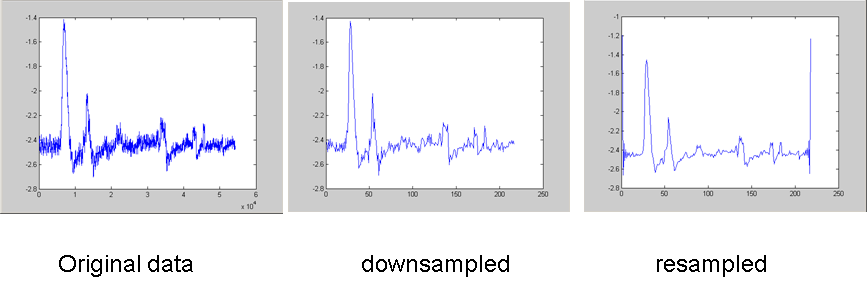On 14 August 2014 00:05, Juan Wu <wujuan22@xxxxxxxxx> wrote:
List experts,
I am attempting to down sample my data from 300 Hz to 1 Hz. I just tried two functions of Matlab: 1) a = resample(Data,1,300); 2) b = downsample(Data,300). The results are quite different between each others.
Apparently, the result from "downsampled" is close to the the original data. However, quite a few persons suggested using the re-sampling method - I get this information from google searching, and very agree with this view. Personally I think the downsample method is too simple and very arbitrary. I also do not believe the "Nearest Neighbor" method. I assume that the method resampling takes both "FIR interpolator and decimator" implementation - this is what I expected. Am I right? But now my output from the re-sampling method is really very terrible. So I assume that the resample function from Matlab does not do a good job for this. I am not sure whether I need change to use other softwares or try other functions in the Matlab.
Any opinions or references are much appreciated.
J
Prof Jan Schnupp
University of Oxford
Dept. of Physiology, Anatomy and Genetics
Sherrington Building - Parks Road
Oxford OX1 3PT - UK
+44-1865-282012
http://jan.schnupp.net
